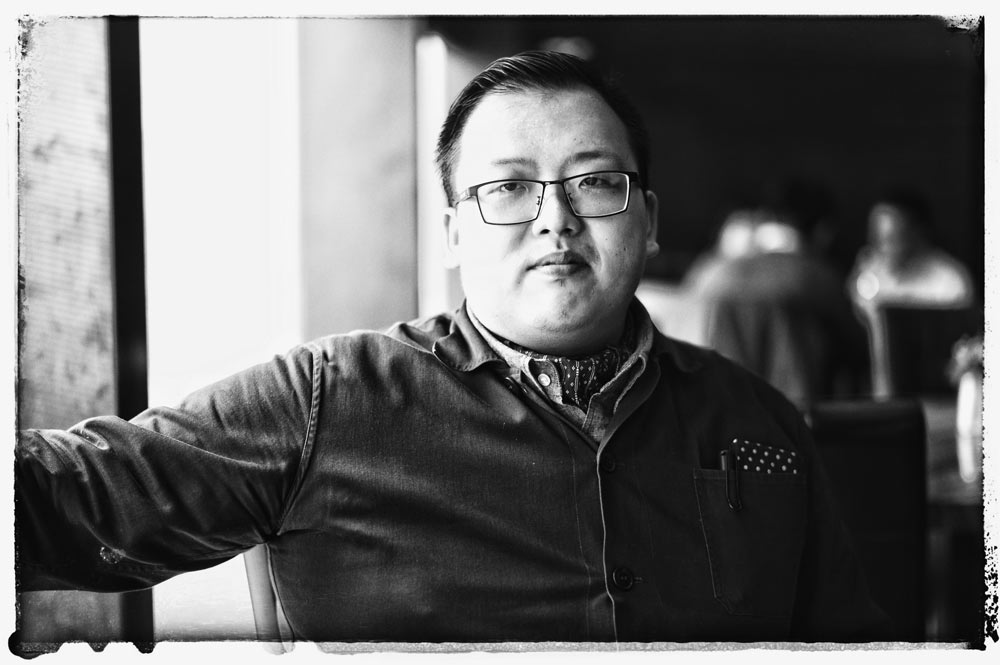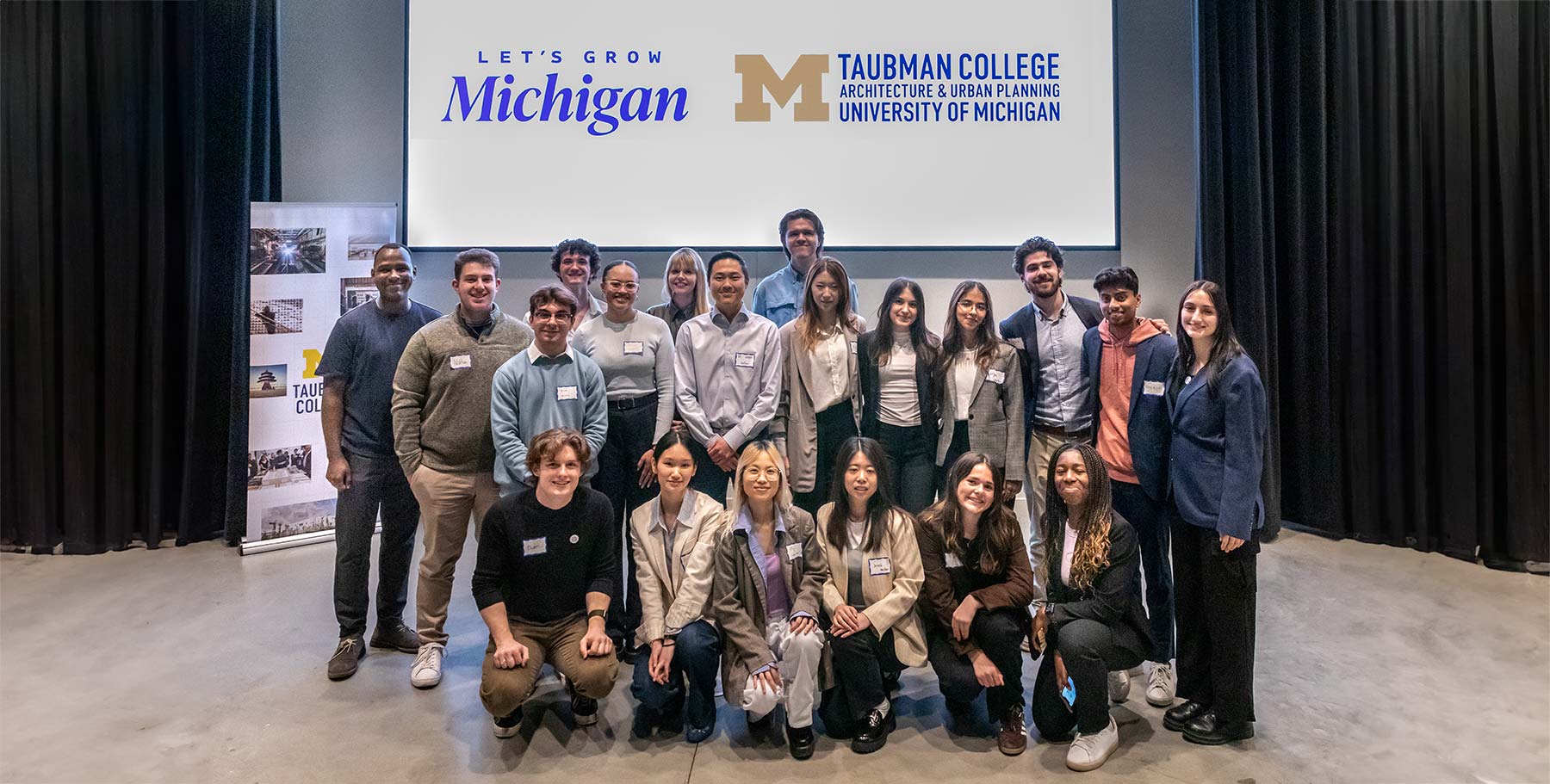By Amy Spooner
Wilson Qian, M.U.D. ’12, doesn’t see lines; he sees lives.
As an undergraduate at Beijing University of Civil Engineering and Architecture, Qian was compelled by how people think about their living environment and by the relationships within that environment, which led him to earn a Bachelor of Engineering in Urban Planning and Design, and then a Master of Urban Design at Taubman College. “Every line you draw is someone’s life. To think about how those lines come together to form a building, and then the relationships between buildings, people and buildings, people and parks, people and their city — that is why I was drawn to urban design,” he says.
As project manager for urban design at AECOM’s Beijing office, Qian, who earned a Master of Landscape Architecture from Harvard after graduating from Taubman College, is at the forefront of helping his native country and hometown adapt to massive growth and urbanization. His former professor, Roy Strickland, calls Qian “a rising urban designer who has emerged as a talented designer, sought-after lecturer, and inventor of urban-design methods emphasizing urban infrastructure.”
Strickland adds, “I foresee an exemplary career for him combining practice, teaching, and academic program development in China and around the world.”

Wilson Qian, M.U.D. ’12, project manager for urban design at AECOM Beijing
At AECOM, Qian is working on major transportation hubs within Beijing and other “urban regeneration projects in Central Beijing that have strategic and political importance.” He also is part of the design team for the Xiong’an New Area in Hebei Province, about 60 miles outside of Beijing, which is the latest planned city to follow in the footsteps of the Shenzhen Special Economic Zone and the Shanghai Pudong New Area. The government hopes that Xiong’an, by becoming a new commercial and industrial hub, will alleviate some of Beijing’s congestion and pollution. Lauded by President Xi as “a project that will have lasting importance for the millennium to come and a significant national event,” Xiong’an will differ from its predecessors through its focus on sustainable development, including limits on population and development density, as well as an emphasis on ecological protection. According to China’s state-run news agency, Xinhua, “Xiong’an will be an answer to China’s growth conundrum: breakneck urban sprawl must give way to a balanced and inclusive development strategy.”
For Qian, working on the Xiong’an design, as well as the upgrades to Beijing’s transportation infrastructure, gets to the heart of that life-changing value that led him to be an urban designer: “Especially in the context of a rapidly changing place like China, my work can help to change people’s lives. It’s tangible now while also shaping the future.”
Qian also is shaping the future of urban design education in China. He worked with Strickland and Professor Niall Kirkwood at Harvard to establish the first urban design program in China and the urbanistic curriculum for the landscape program at his undergraduate alma mater, Beijing University of Civil Engineering and Architecture (BUCEA). The idea first took root with the gaps he experienced in his own education and then was solidified by the quality of his training in the United States. “Once I left China, I could see more clearly the issues that my country was facing with regard to urban and natural environments and how it wasn’t preparing students to address them,” Qian says. “I realized that if you want to change the future, you have to begin by making changes now. So I decided to change the learning curve for Chinese students.” Today, Qian is a lecturer at BUCEA, in addition to practicing at AECOM.
It’s an interesting time to be a student and practitioner in the city, Qian acknowledges. Equitable development is a hot topic after what Qian calls “a series of problematic decisions” to address Beijing’s growth, including long- lasting issues with China’s hukou system, which limits services like health insurance to the city’s native-born population. Advocates say hukou regulates rural-to-urban migration; critics call it a form of segregation. “It has made Beijing unfriendly for new residents,” say Qian of hukou. At the same time, the city’s expansion has sparked debate on how to blend old and new. Rem Koolhaas towers mix with ancient temples in what Qian calls “an environmental paradox. We are struggling to figure out what these changes mean for architecture.”
Qian joined AECOM in 2016 after spending three years at Beijing Advanced Center of Urban Design for Future Cities, a think tank that grapples with issues facing the growth of the Beijing megaregion and how solutions could be applied to other megaregions in China and beyond. As he helps one of the world’s most populous cities embrace the future, Qian sees parallels with work he did in Strickland’s New York City 2111 studio at Taubman College. “We don’t know what New York City can be in a hundred years, or if there will even be a New York City. It’s the same with Beijing. But to predict the future, we can notice the present, while getting as much information as possible from the past, to anticipate the curve forward.”





